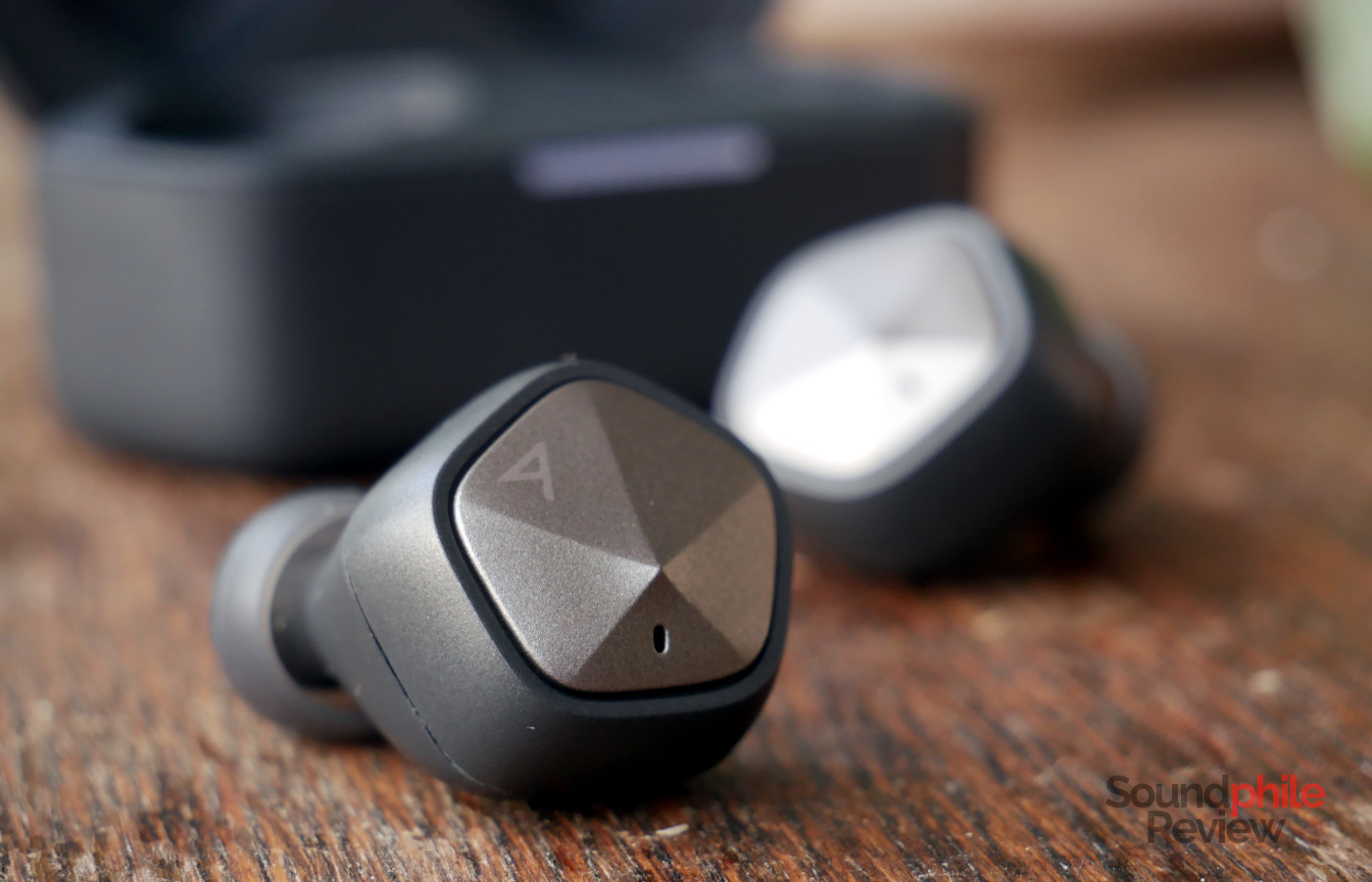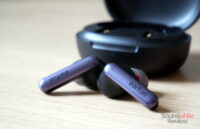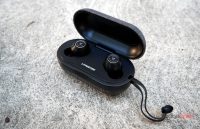I’ve never been really a fan of true wireless earbuds, mostly due to the fact that they often trade away too much sound quality for the convenience they offer. The Astell&Kern UW100MKII go against this trend and are, in fact, among the best-sounding true wireless earphones I have tried to date, with an almost-neutral response that will surely satisfy those who seek high fidelity without renouncing too much on the convenience front.
Disclaimer: I received a free unit from A&K’s distributor in the UK, HEA Distribution. The UW100 MKII have a suggested retail price of £269. Additional information is available on the official website.
TL;DR: recap
| Pros |
Cons |
| + Well-built
+ High passive isolation + Great sound quality + Long battery life |
– No ANC
– They don’t automatically turn off – Big, so could be uncomfortable to some – No IP rating against water and dust |
Rating: 8.5/10
Packaging & Accessories
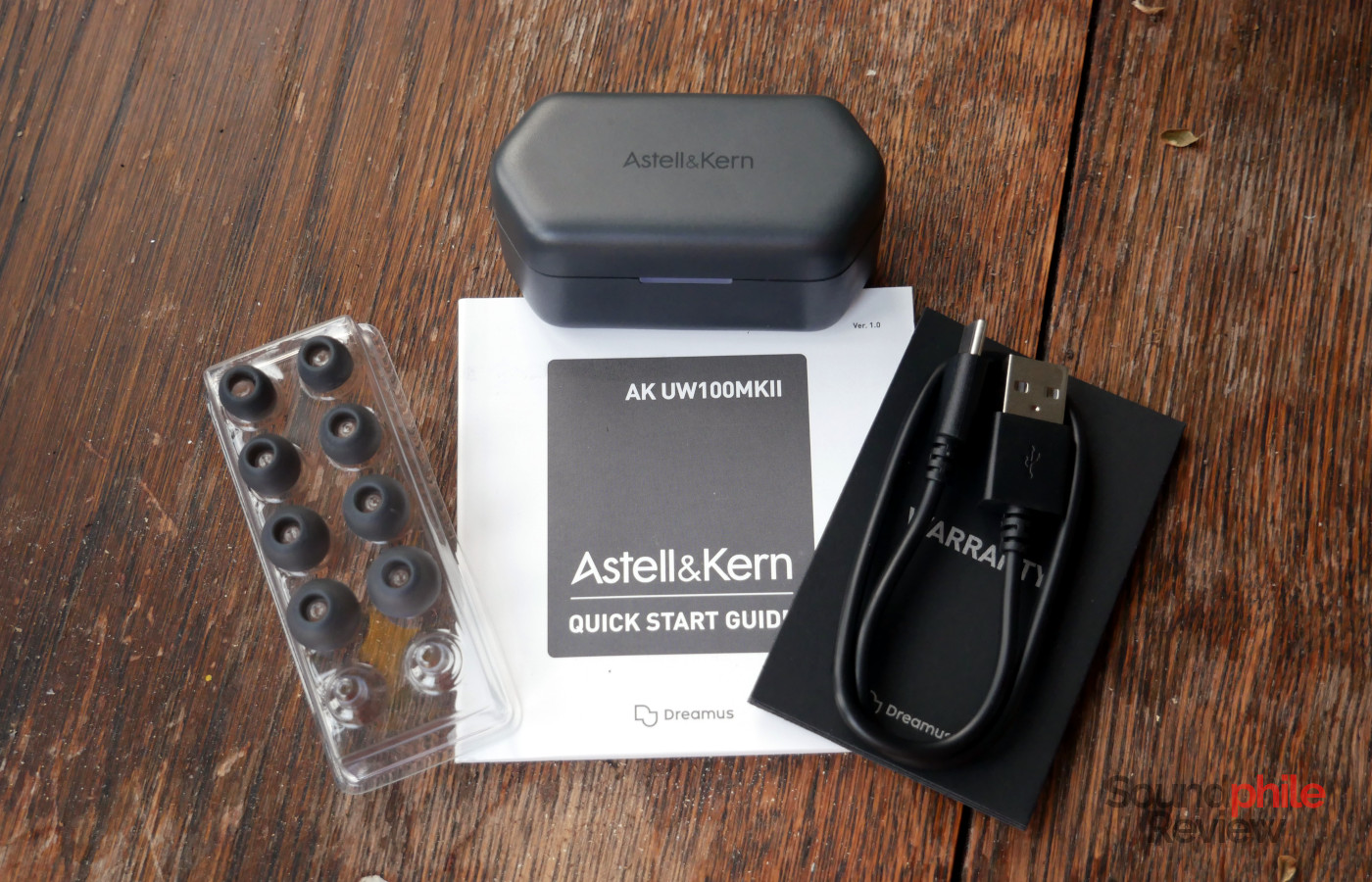
The packaging for the A&K UW100MKII is quite simple: he cardboard box only includes the case and the earphones themselves, plus a manual and a USB to USB-C cable.
Design & Comfort
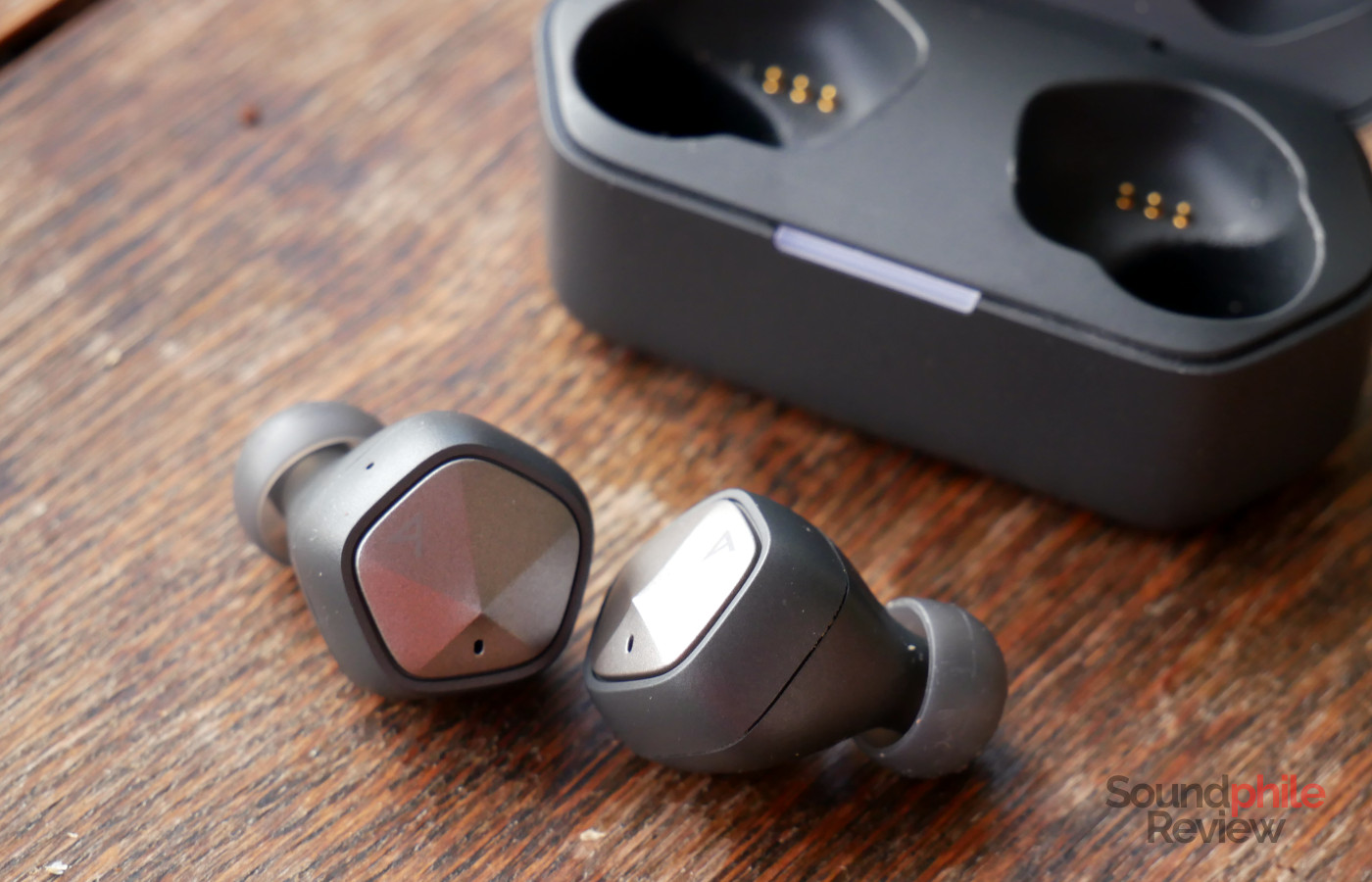
The Astell&Kern UW100MKII’s design is quite peculiar: the shells are shaped like pentagons, which is quite unique. The shell is made of matte grey plastic and there is a metal faceplate applied on top of it; the faceplate is also touch-sensitive so you use it to give commands to the earphones. The UW100MKII look very elegant and understated.
They’re very well built, with the shell made of two pieces of plastic that have a small seam between them. A&K makes no mention of IP certification, so they should be regarded as not being resistant to water – which is quite an anti-feature in this day and age!
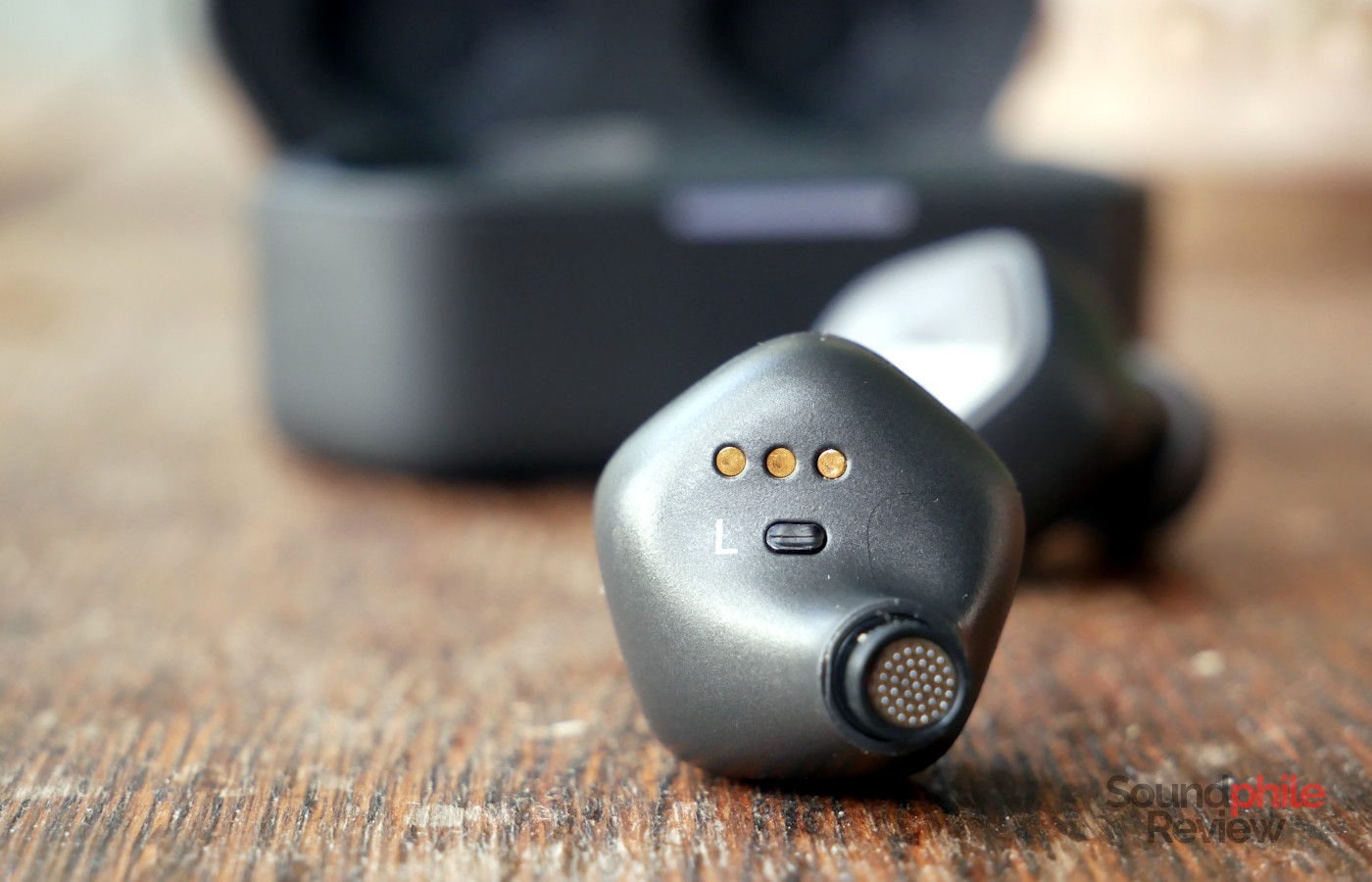
Although the UW100MKII are shaped to be comfortable, their size makes this a difficult task. I have medium-to-large ears and I normally have no problems fitting earphones in them, but these earphones are so big they push against my pinnae in a rather fatiguing way. It takes around 15 minutes for my ears to start feeling the fatigue. Comfort is an extremely personal matter, so your experience might differ from mine, but overall I would say that these earphones will prove a difficult fit for many people due to their size.
Passive isolation is definitely good and it helps you remove the sounds you can experience in a quiet environment – as an example, I can’t really hear the traffic from inside my home, although it normally is relatively loud. It also makes most noises much quieter. The lack of ANC is felt in those situations where noise is high, such as public transport.
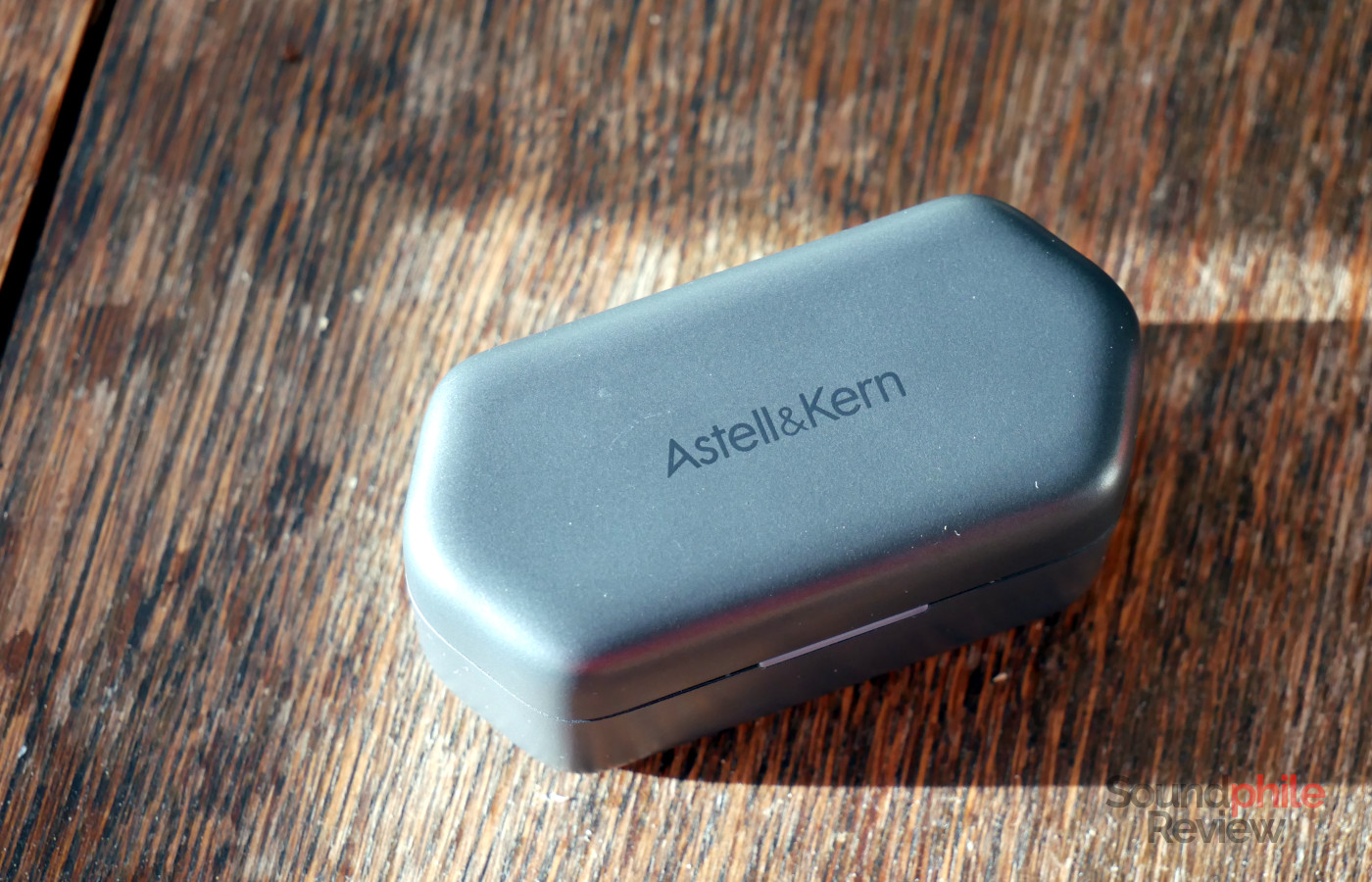
The case is mid-sized, and it fits easily in my trousers’ pockets (though women might have a harder time, given the fashion industry’s unwillingness to provide them with decent-sized pockets). There is a small notch that helps open the lid (which has a spring that keeps it open!), and it’s interesting that A&K decided to fit a status LED in there: it lights up when the earphones and the case itself are charging (in blue and green, respectively). This is a very nice use of design that conjugates practicality with form. On the opposite site, which means behind, there is a USB-C port to charge the case.
Extra Features & Battery Life
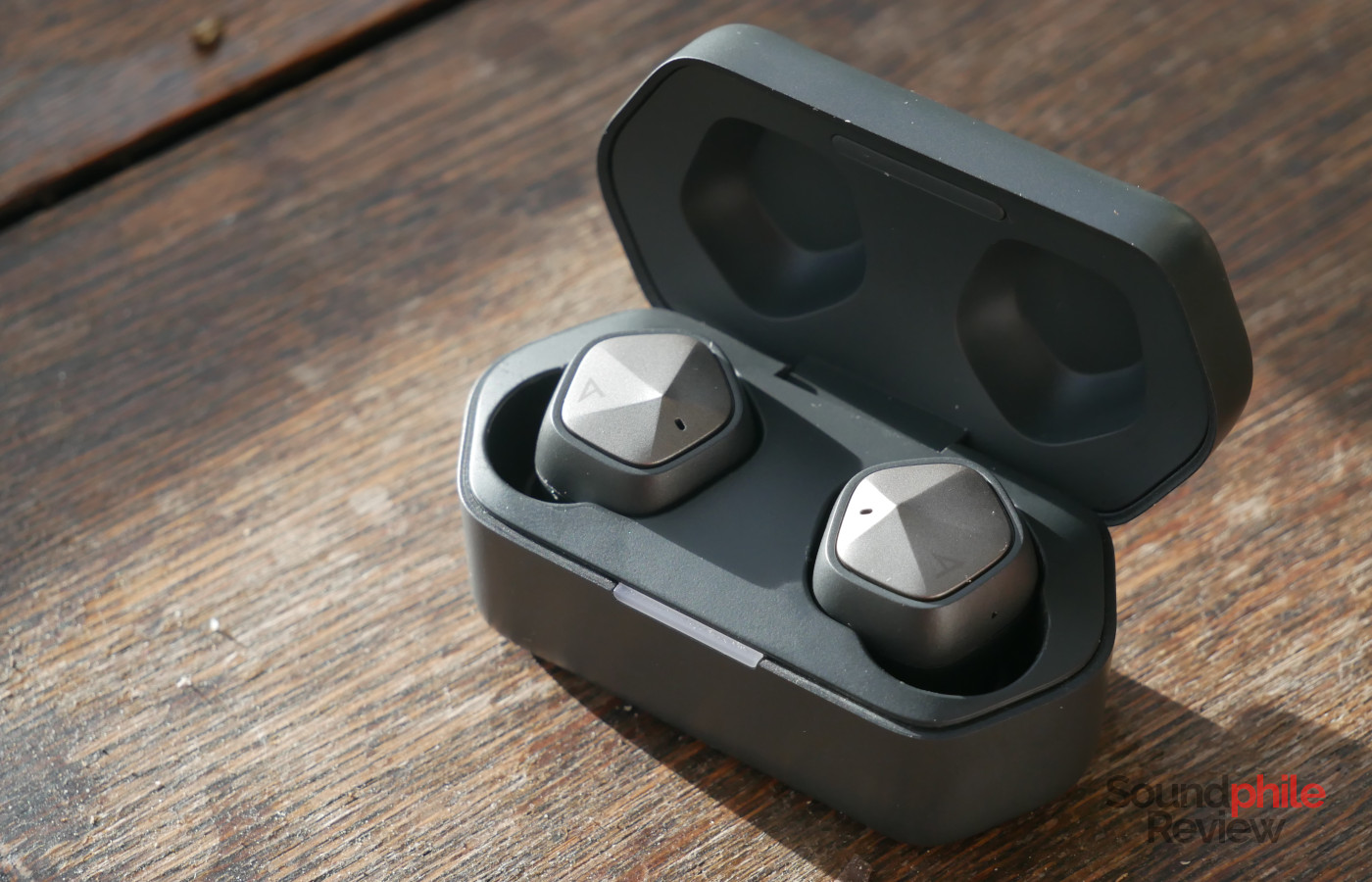
The Astell&Kern UW100MKII support the SBC, AAC and aptX Adaptive codecs. The latter requires you to have a compatible device equipped with a Snapdragon processor to take advantage of the full CD-like quality the codec offers. If your device does not support aptX Adaptive, the earbuds will fall back to standard aptX.
The connection is very stable and it offers very good range; in my usual “walk around the house” test, I can move around freely and there are issues only in the farthest corners. I have never had issues when going around. It supports multipoint connection, so you can connect e.g. your smartphone and your computer; it should be noted, however, that there is a quirky behaviour in this: if you are playing music from your computer and a notification arrives on your smartphone, the music stops for a moment, the notification sound from the phone plays, then there is a new moment of silence and then music plays again. It is as if the earbuds were disconnecting from one source and connecting to the other, and then back – and the music does not actually pause in this process, so you always lose a few seconds.
There are proximity sensors that allow the earphones to detect when they have been taken out of the ears, so they can pause the playback. This happens instantly, just as it instantly starts again when you put the earphones back in your ears. This is also independent of the device being used, as long as it supports playback control through Bluetooth: even my Linux computers work without issues.
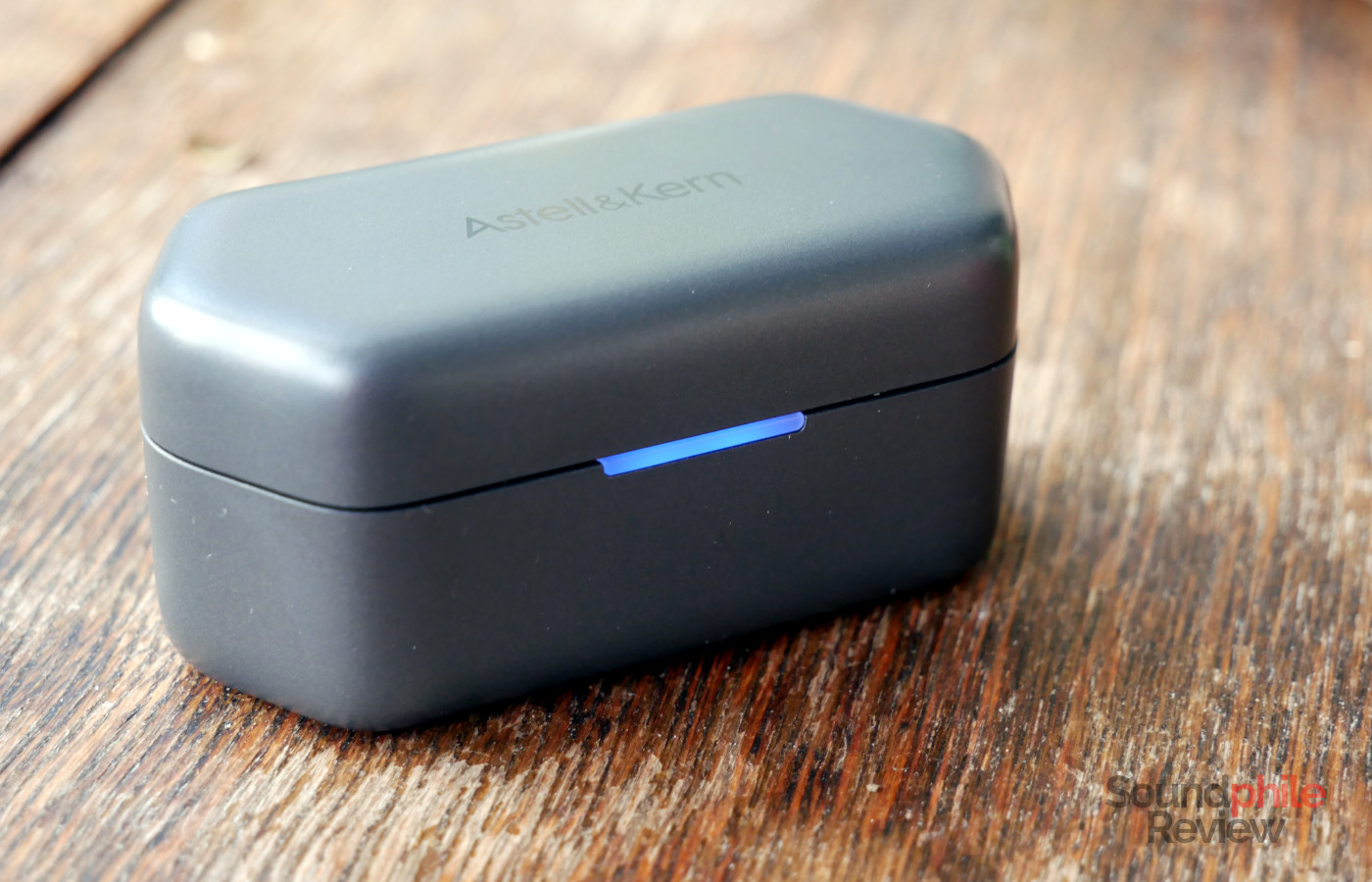
Astell & Kern gives a playback time of 9.5 hours on a single charge and that appears realistic, given how the earphones only use about 10% of the charge for one hour of playback. The only issue is that one earphone appears to act as the bridge between the source and the other one and this makes its battery run out faster. It should also be noted that even when they’re not connected to any source, the earphones do not turn automatically off. If you forget them out of the case, they will simply stay on until they run out of battery. The case supports wireless charging.
Software
Astell&Kern provides an app you can use to edit the settings of the earphones. It’s called AK Control and it’s available for both Android and iOS. The app allows you to monitor the status of the earbuds as well as to change a few settings.
The main screen shows you the status of the battery of the earbuds, the Ambient Mode (which has four different levels), equaliser, an option to disable the wearing detector sensors, as well as access to settings for tap gestures, DAC filters (in keeping with the audiophile target market for these earbuds) and the language used in voice prompts (you can choose between Korean, English, Japanese and Chinese). The gestures settings allow you to customise two- and three-tap gestures, by choosing between “ambient mode level adjustment” and “next track” with two taps and “voice assistant” and “previous track” with three taps. The DAC filters offered are sharp roll-off, slow roll-off, short delay sharp roll-off and short delay slow roll-off.
The app also allows you to update the firmware of the earbuds, as well as to reset the settings. Overall it’s fairly complete and easy to use, so A&K has done a good job in this department.
Sound & Specs
I have tested the A&K UW100MKII with a variety of devices, including my Google Pixel 6 Pro phone and my Linux computers.
Astell & Kern UW100MKII |
| Frequency response | 20 – 40,000 Hz |
| Impedance | N/A |
| Sensitivity | N/A |
| Bluetooth version | 5.0 |
| Codecs | SBC, AAC, aptX, aptX HD |
There is sometimes a relatively loud hiss/whistle-like sounds that shows up on one earbud at a time. I haven’t been able to figure out the cause, but it often goes away if I put the earpiece back into the case, leave it there for a few seconds and then take it back out.
Soundstage is relatively wide and it offers good depth, which is quite welcome given how so few TWs earbuds are able to offer that. Imaging is accurate and allows you to place instruments with ease on the stage. Instrument separation is very well done throughout the whole spectrum, so picking an instrument in a mix comes easy even in crowded tracks.
Bass is slightly de-emphasised, but very tactfully so, and it also enjoys good depth and a very good level of detail. Starting with quantity: bass is slightly recessed, with sub-bass staying more or less in line with mid-bass; the overall result is a bass section that sits just below neutrality. It lacks the “fun” aspect many true wireless earbuds have, but on the other hand it does not alter the overall tonality. The lack of emphasis is especially felt in tracks which normally require more copious bass – e.g. electronica, metal, etc. Speed is very good and it contributes to a high level of detail.
Midrange is well detailed and well-placed in the overall mix, but it does suffer from a slight imbalance inside it. To be more specific, there is a bump between the middle and the upper regions which make them stand out quite a bit in the mix. While it is not a peak which would make things outright problematic, it does influence the overall tonality by making it brighter and more prevalent in the general mix. As an example, in a track such as Aes Dana’s Somewhen, the main synthesizer line is super front and centre, rather than being slightly more blended with the rest. The good thing is, in any case, that midrange sounds very good and it handles most any instrument correctly, including both male and female vocals. The level of detail is very good, even at low volume.
I think I have become more sensitive to treble than I used to be, so I find many headphones quite fatiguing. On the UW100MKII, treble is done in a way that allows me to listen to the headphones without issues. I would say that it is mostly neutral, though maybe slightly below neutrality, and with very good extension that contributes to making it airy and open. It sounds like there’s a bit of a dip in the lower section, so it’s actually the middle one that emerges in the mix. The level of detail is really good, tough micro-details do not emerge clearly.
A huge caveat about equalisation has to be added here. The description you read above is about the equaliser set to a flat frequency response. The earphones come with built-in EQ, which for once makes them sound much better than a totally flat EQ profile. There are actually two profiles you can choose from and which are very close: “natural” and “balance”. The major difference between them is how they boost bass, as “balance” adds more bass and slightly more treble, whereas “natural” focuses more on midrange and treble. My personal favourite among the two is “balance” as it makes bass more present in the mix and it therefore brings it closer to what I define as “neutral”.
My own choice, when it comes to equalisation, is to boost bass (in the application: +3 dB on 32 and 125 Hz, +4 dB on 64 Hz), as well as upper midrange and lower treble (+4 dB on 2kHz, +2 dB on 4 kHz and +1 dB on 8 kHz), as this sounds to me like the most balanced presentation.
Final Thoughts
I think that Astell & Kern did a fantastic job with the UW100MKII: they sound great and offer the right amount of functionality, prioritising sound quality over gimmicky features. ANC is the only feature which is (sorely, actually) missed, but the great passive isolation the earbuds offer make it possible to use them on a train (like I am doing while typing this sentence) without feeling the absence of ANC too much.
In terms of sound quality, the Astell&Kern UW100MKII are among the best-sounding true wireless earbuds I have found so far and this is the main reason why I gladly and fully recommend them.

